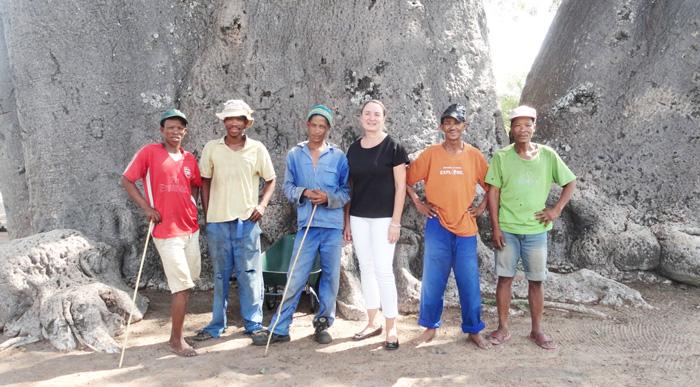
EU Ambassador visits Tsumkwe Bushmen


European Union Ambassador to Namibia, HE Jana Hybaskova with the Nyae Nyae Conservancy Chairperson Xoan/’an /Ai!ae, discussing local conditions for cattle herding with a member of the conservancy. Photograph by the Nyae Nyae Development Foundation.
Despite stark variation among the different communities known as San or Bushmen, these people share a common history of marginalisation. The San are the aboriginal inhabitants of southern Africa, found today only in scattered localities in South Africa, Namibia, Botswana, Angola and Western Zambia. Everywhere they are marginalised and have been exploited by indigenous populations for ages.
The level of poverty of the San is unmatched by that of any other group in Namibia as the Human Development Index indicates.
The European Union Ambassador to Namibia, Her Excellency Jana Hybaskova visited Tsumkwe and the Nyae Nyae Conservancy last week to meet an indigenous San communities to look at projects funded by the EU. Tsumke is today the administrative capital of the eastern section of the Otjozondjupa Region, formerly known as Bushmanland. One of these projects is steered by a local Non-Governmental Organisation, the Nyae Nyae Development Foundation (NNDFN). The foundation works with the community to help them adapt to the impacts of climate change, widely expected to affect the San significantly given their dependence on the natural environment.
The EU consequently supports the climate change adaptation project, assisting the local San community to diversify their livelihoods, improving food security through conservation agriculture and livestock management and improving fire risk management.
During the visit the Ambassador also met with local leaders, the Regional Councillor – Honourable Fransina Ghauz, /’Ui Hatmund from the Ju/’hoansi Traditional Authority and Nyae Nyae Conservancy Chairperson Xoan/’an /Ai!ae. They highlighted some of the areas that they feel need greater support including local education and water supply in the villages, both sectors which the EU is actively supporting in Namibia.
The Ambassador found the community warm and welcoming and admired the balance they had achieved living sustainably in their rich natural environment. Kallie !Nani, a Traditional Authority Councillor and translator, enjoyed teaching the Ambassador the Ju/hoansi word for Baobab tree #O’m.
Namibia’s San population constitutes about 2% of the national population. Numbering between 27000 and 38000 people in total, the overarching category known as “San”, denotes former hunter-gatherer communities, includes several different ethnic groups with distinct languages and dialects. In general, San individuals identify themselves according to their ethnic group, i.e. Ju|’hoansi, !Xun (also written !Kung), Hai||om, Naro, Khwe, !Xoon, ≠Kao||’aesi or ‘N|oha rather than “San” (a generally accepted political label) which is an externally used term, like “Bushmen”. They live on commercial farms, on resettlement farms, in communal areas among other ethnic majorities, in conservancies or community forests, in national parks and in urban townships.











































